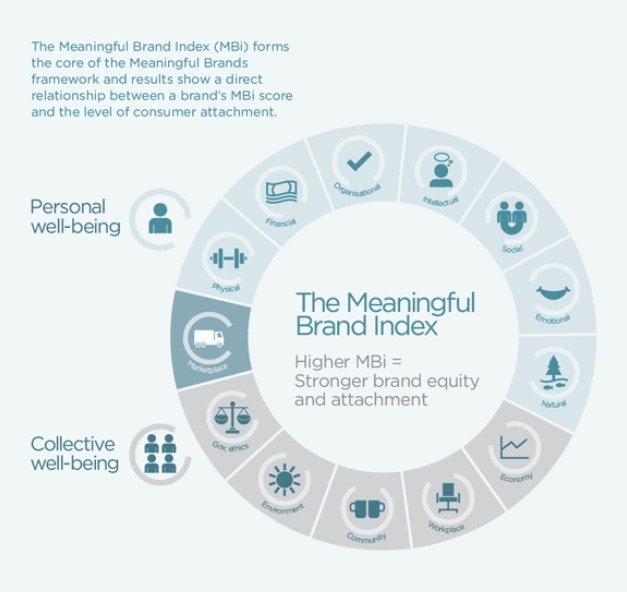
OVERVIEW
MANAGEMENT
PERFORMANCE
POSSIBILITIES
CAPITALS
ACTIVITIES
ACTORS
BURGESS
Metrics | ||
|
Burgess COMMENTARY | ||


Meaningful Brands Index Methodology In the previous post on Apple and its rankings within Havas Media’s Meaningful Brands Index, there was also a question of the study’s methodology. To that question, Sara de Dios Lopez, Global Director of Meaningful Brands, provided the following. I’ve done some minor editing for clarity. Also, any emphasis is mine. Meaningful Brands (MB) explores to what extent people (+18 years ) perceive brands are tangibly and positively contributing to their quality of life and to society at large. Our framework and the MB index considers 3 key elements (split into 13 dimensions and 44 attributes) that collect: 1) Marketplace/product functional issues such as
3) Collective well-being. People want to connect with the company’s values and see what is behind the walls
Each brand is evaluated on all these dimensions to get its MB index. So, as you see, it considers many aspects of its contribution to our personal and collective well-being. We measure how each brand performs on all these 44 attributes as well as their contribution to brand equity (the brand’s ability to translate these perceptions into better brand equity KPIs–consideration, purchasing intention, advocacy, etc). Our study demonstrates statistically that brands with higher MB index scores get better brand equity KPIs, which results in greater sales/market share in the medium term and much better financial results in the long term (the top 25 over-performed the stock market by 120%).
by Rob Fields
| July 11, 2013 The text being discussed is available at | http://robfields.com/2013/07/11/meaningful-brands-index-methodology/ |